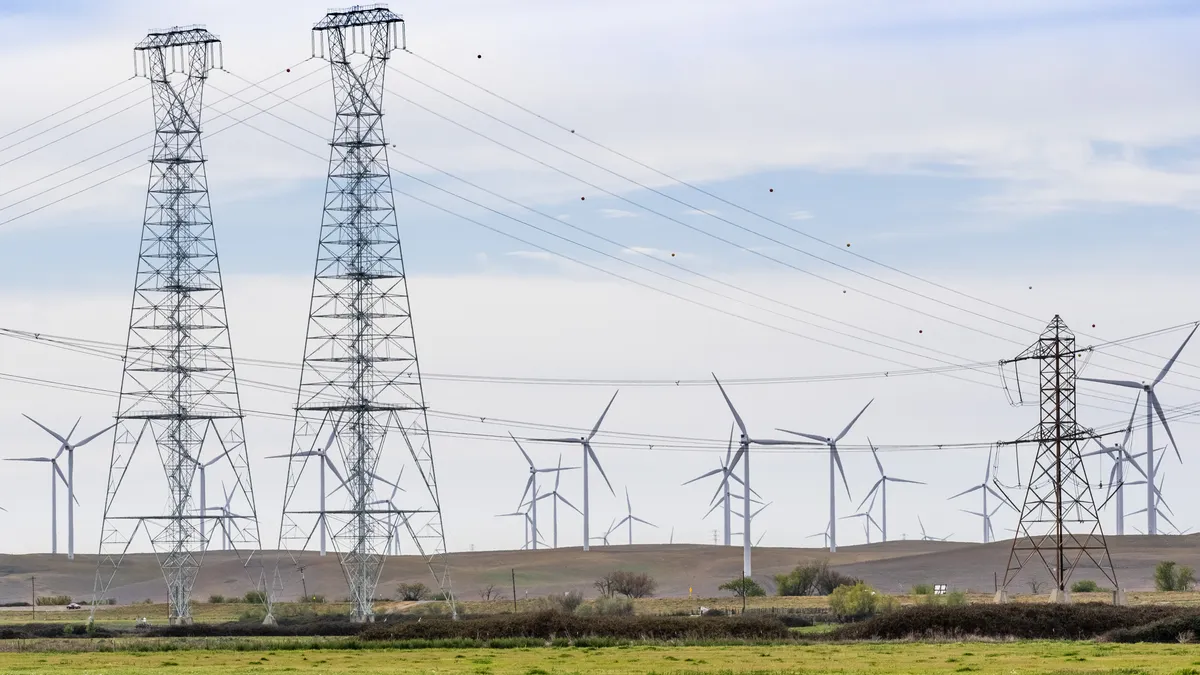Dive Brief:
- The Federal Energy Regulatory Commission’s proposal to reinstate a federal right of first refusal giving incumbent utilities first dibs on building certain regional transmission projects would hurt consumers and should be scrapped, the U.S. Department of Justice and the Federal Trade Commission told the agency Wednesday.
- Instead, FERC should strengthen and expand existing rules requiring competition for transmission, the DOJ and FTC said in response to a commission proposal to revamp the transmission planning and cost allocation process. The DOJ and FTC have “significant concerns” about the proposed ROFR in line with longstanding antitrust policy that generally disfavors regulatory barriers to entry, according to their comments filed with the energy agency.
- The Edison Electric Institute, a trade group for investor-owned utilities, pressed FERC to give its members and other incumbent transmission owners a full ROFR, saying competition in the transmission sector has increased project costs and created delays.
Dive Insight:
FERC in April proposed a broad overhaul of its rules for regional transmission planning and for deciding who pays for new transmission facilities. Under the proposal, incumbent transmission owners would be able to build transmission facilities without going through a bidding process if they have unaffiliated partners on the projects.
The DOJ and FTC urged FERC to ditch that aspect of its overall proposal.
“With a ROFR, consumers will lose the many benefits that competition can bring, including lower rates, improved service, and increased innovation, leading to a more efficient, reliable, and resilient grid,” they said. The requirement that incumbent transmission owners must partner on projects didn’t ease their concerns, they noted.
The U.S. transmission system likely faces a major expansion as the country shifts to using more renewable energy such as remote wind and solar farms, the DOJ and FTC said. A Princeton University study estimated the U.S. would need about $330 billion in new transmission by the end of this decade and up to $2.2 trillion by 2050 to shift to an emissions-free economy, they noted.
In its proposal, FERC said its previous effort to spur regional transmission development, known as Order 1000, failed to work as it had hoped.
There are several reasons for the lack of regional transmission development, according to the DOJ and FTC. These include incentives for utilities to focus their investment on local projects, which, unlike regional ones, don’t have competitive requirements, they said.
Incumbent utilities also may be able to exert undue influence over allocating ratepayer dollars between local and regional transmission projects, they said.
Instead of displacing competition, FERC should consider measures that would address “misaligned incentives” that keep utilities from building larger, regional projects, the DOJ and FTC said.
“FERC’s proposals around transmission planning and cost allocation may go a long way toward addressing the logjam that FERC has identified, and those reforms can go further if FERC addresses the anticompetitive incentive and ability for incumbent transmission owners to influence transmission planning processes to favor transmission projects over which they can maintain their monopolies,” the DOJ and FTC said.
Also, the proposal runs counter to an executive order on promoting competition that President Joe Biden issued in July 2021, according to the DOJ and FTC.
The Advanced Energy Economy trade group urged FERC to set aside its ROFR proposal and consider competition issues separately, such as in a pending transmission cost-containment proceeding.
Some of the other groups asking FERC to drop its ROFR proposal include the Electric Power Supply Association, the Electricity Consumers Resource Council, the Advanced Energy Buyers Group and the Electricity Transmission Competition Coalition.
Taking the opposite perspective, EEI said FERC should fully restore the right of incumbent utilities to build transmission without going through competitive processes, not only when they partner on projects.
“Incumbent utilities are in the best position to know the needs of their system,” the trade group said. “Incumbent utilities also have the relationships with state regulators, communities and other utilities and are able to work with them to get transmission built.”
Since FERC removed incumbent utilities’ ROFR for regional transmission projects about a decade ago, development of those projects has stalled and their costs have increased, a sign that competition doesn’t work for regional projects, according to EEI.














